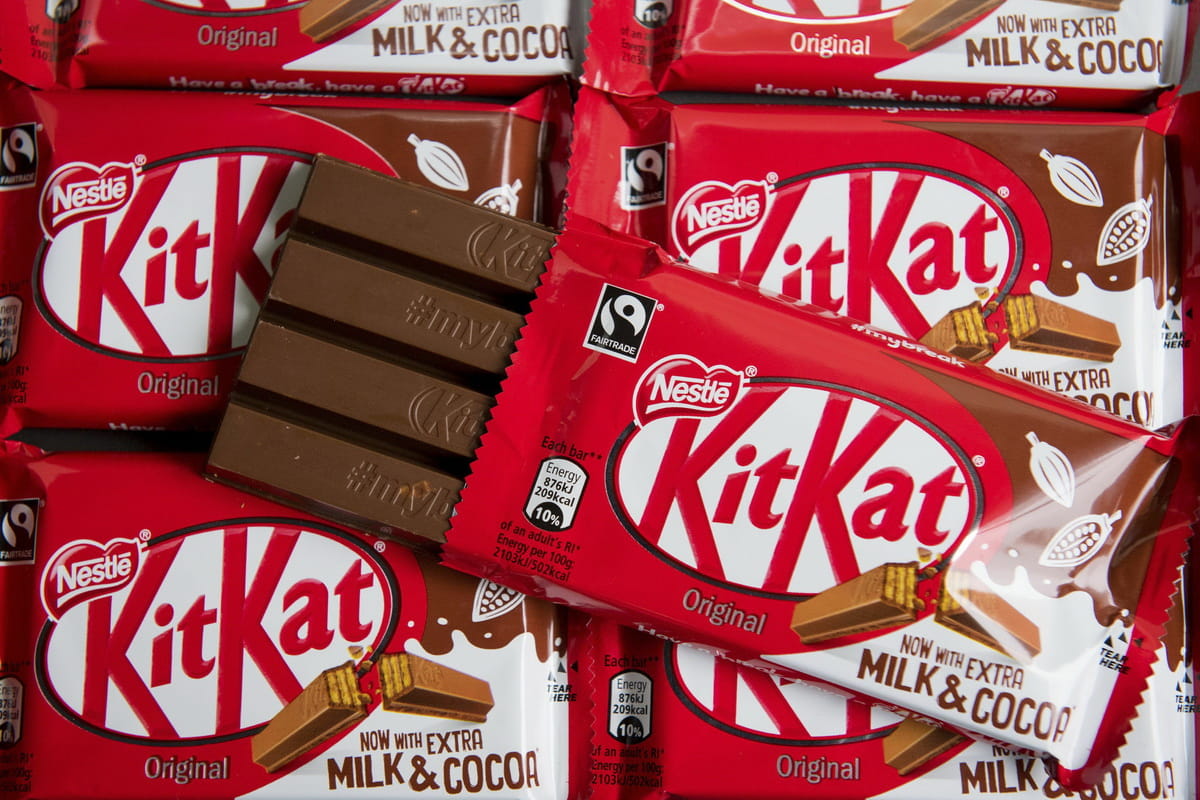From its inception in 1935 at Rowntree’s of York, the Kit Kat, originally a frugal 2-pence ‘Chocolate Crisp,’ has become a global phenomenon. Its catchy name, adopted in 1937, nods to the Kit-Cat Club, a symbol of British sociability. Surviving wartime scarcity to become Nestlé’s flagship confection by the 1960s, Kit Kat broke records with over 418 million sold in 2011.
Dive into the delightful details and discover how a simple chocolate bar captured the world’s fancy, transforming snack time into an iconic break.
1. The Origin Story of Kit Kat
The legacy of Kit Kat began in the 1930s, a decade marred by the Great Depression. However, it was also a time when Rowntree’s of York decided to bring a beacon of affordable luxury to the masses with the introduction of the “Chocolate Crisp” in 1935. Priced at just 2d per bar, it was marketed as a snack fit for the working class. The rebranding to “Kit Kat” in 1937 was a strategic move to imbue the product with a sense of relaxation and leisure time, aligning with the emerging concept of the tea break in British culture.
The outbreak of World War II necessitated a change in recipe, with a cocoa-based mixture replacing milk chocolate. Despite these changes, Kit Kat’s popularity soared, symbolizing a brief respite during difficult times. By the 1960s, the restoration of its milk chocolate recipe and global distribution under Nestlé marked Kit Kat’s triumphant transition into a beloved international brand.

Image: qualityfoodanddrink.com
2. Why Kit Kat Got Its Name
The Kit Kat name is steeped in British social history, drawing inspiration from the 17th-century Kit-Cat Club—an assembly of Whig party patrons and artists who met at a pie house run by pastry chef Christopher Cat. The club’s name, a nod to Cat’s famous mutton pies, came to symbolize political and social discourse. When Rowntree’s rebranded their Chocolate Crisp to Kit Kat in 1937, they tapped into this heritage, infusing the brand with connotations of British camaraderie and the enjoyment of a shared break.
The alliteration and snappy rhythm of the name Kit Kat made it exceptionally memorable and helped the chocolate bar stand out amidst a sea of competitors. It provided a distinct identity that would become integral to the brand’s playful and approachable image, contributing significantly to its market longevity.

Kit-Cat Club. Image: artuk.org
3. Kit Kat’s Breakthrough in Japan
Kit Kat’s foray into the Japanese market in the 1970s initially mirrored its Western approach, but the brand’s breakthrough came with the realization of a linguistic coincidence. The phrase “Kitto Katsu,” akin to a good luck charm in Japanese culture, resonated with the product’s name and became an integral part of its identity, especially among students. Capitalizing on this serendipity, Nestlé Japan repositioned Kit Kat as a token of encouragement and luck, a strategic pivot that ingrained the brand into Japan’s social fabric.
The introduction of localized flavors like matcha green tea in the early 2000s showcased Nestlé’s commitment to cultural integration. By 2010, Japan had become the country with the most extensive assortment of Kit Kat flavors, a testament to the brand’s innovative spirit and its embrace of Japan’s diverse palate.
4. The Record-Breaking Kit Kat Sales
Kit Kat’s accolades in the confectionery world include a notable Guinness World Record, achieved on March 6, 2011, for the most sold chocolate bar with an astonishing 418 million bars sold globally in a single year. This record is a reflection of its global reach and the successful alignment of the brand with the concept of a leisurely break. The Kit Kat has transcended its status as a mere confection to become a global symbol of taking time out.
The secret to Kit Kat’s enduring success isn’t just in impressive sales figures; it lies in the consistent quality that has been maintained since its inception. The meticulous balance of creamy chocolate and the quintessential crunch of the wafer has remained unchanged, making Kit Kat a timeless classic in the rapidly changing world of snacks.
5. The British Roots of Kit Kat
Born in the chocolate-rich city of York, Kit Kat’s British heritage is integral to its identity. With a lineage dating back to the 1930s, the brand has been a bastion of British confectionery tradition. Throughout its history, Kit Kat has embodied the quintessential British values of quality and craftsmanship, qualities that are still prevalent in each bar produced in the York factory — a site that’s been the heart of Kit Kat’s production for over eight decades.
Kit Kats produced in the UK adhere to the original recipe, a nod to the brand’s commitment to its roots. This dedication to tradition has kept the Kit Kat true to its origins, offering the same beloved taste that has made it a staple in British snack history.
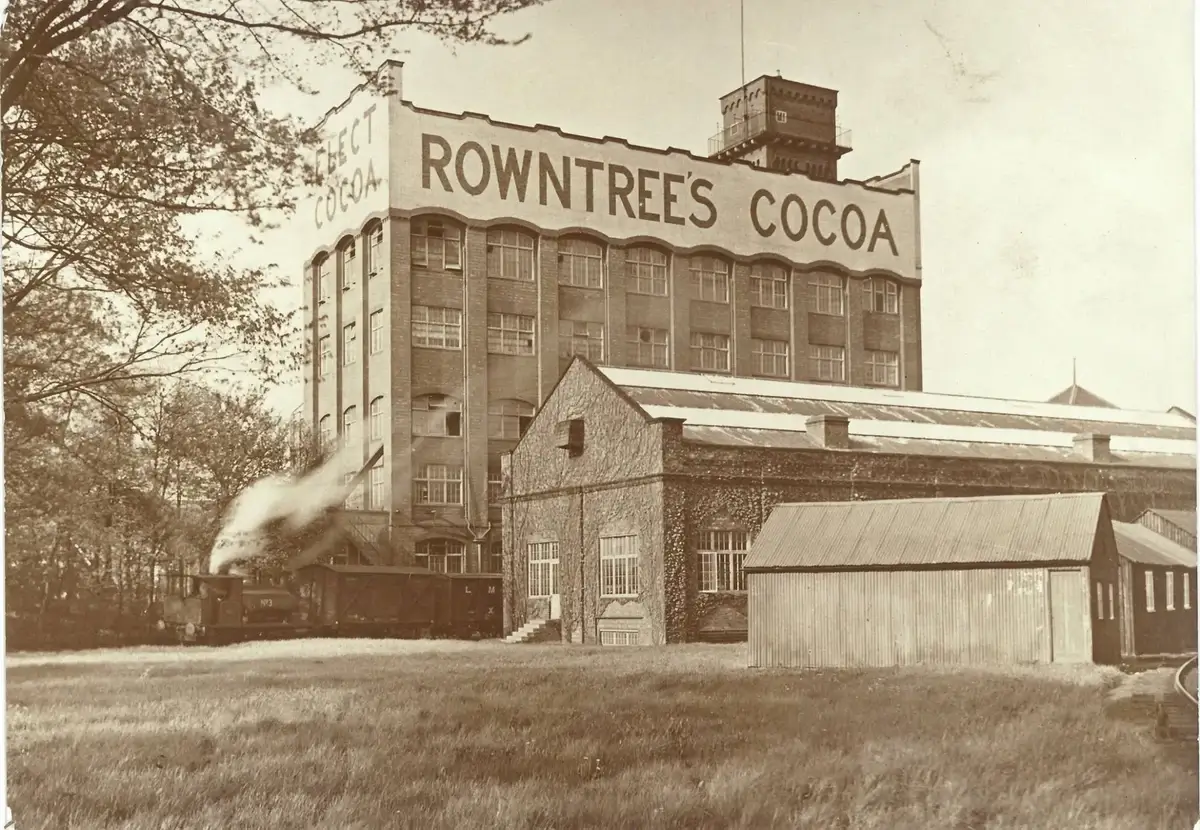
Image: yorkschocolatestory.com
6. Hershey’s Role in Kit Kat’s US Journey
Kit Kat’s journey in the United States is intertwined with The Hershey Company, which has been manufacturing and distributing the bar since 1970 thanks to a unique licensing agreement. This partnership has allowed Kit Kat to adapt to the American confectionery market, adopting a recipe that caters to the local palate while preserving the iconic Kit Kat crunch.
Hershey’s role extends beyond production; its powerful branding and extensive distribution network have been instrumental in embedding Kit Kat into the fabric of American snack culture. The collaboration between these two giants has facilitated Kit Kat’s prominence as a beloved chocolate bar across the United States.
7. The Secret Behind the Crisp
The distinctive crisp of a Kit Kat bar is the result of meticulous engineering. At the heart of this texture is the wafer, a product of carefully controlled baking and a precise batter that ensures the perfect snap in every bite. This commitment to quality is a hallmark of the Kit Kat production process.
Kit Kat’s sustainable approach to production includes the innovative practice of repurposing rejected bars. These bars are ground and used as a filling for the wafers in new bars, embodying the brand’s zero-waste ethos while ensuring the integrity of the signature Kit Kat crunch.
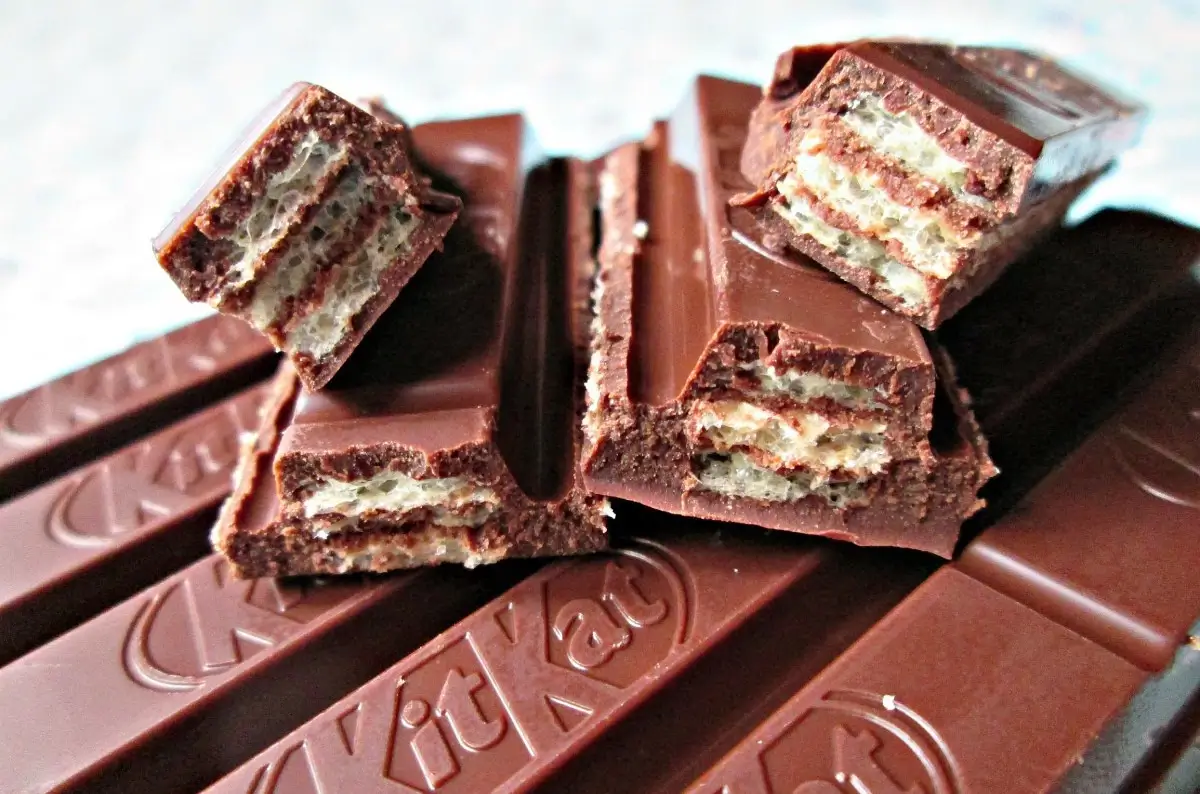
Image: irecommend
8. How World War II Shaped Kit Kat
World War II posed significant challenges for the confectionery industry, leading to rationing and ingredient shortages. Kit Kat was no exception; the brand had to adapt to the scarcity by altering its recipe. Milk was in short supply, so a dark chocolate coating was used instead. This period highlighted the brand’s resilience, as it continued to provide a sense of comfort even in tough times.
After the war, Kit Kat was quick to restore its original recipe as soon as ingredients became available again. This adaptability not only preserved Kit Kat through the war years but also reinforced customer loyalty that would propel its post-war boom.
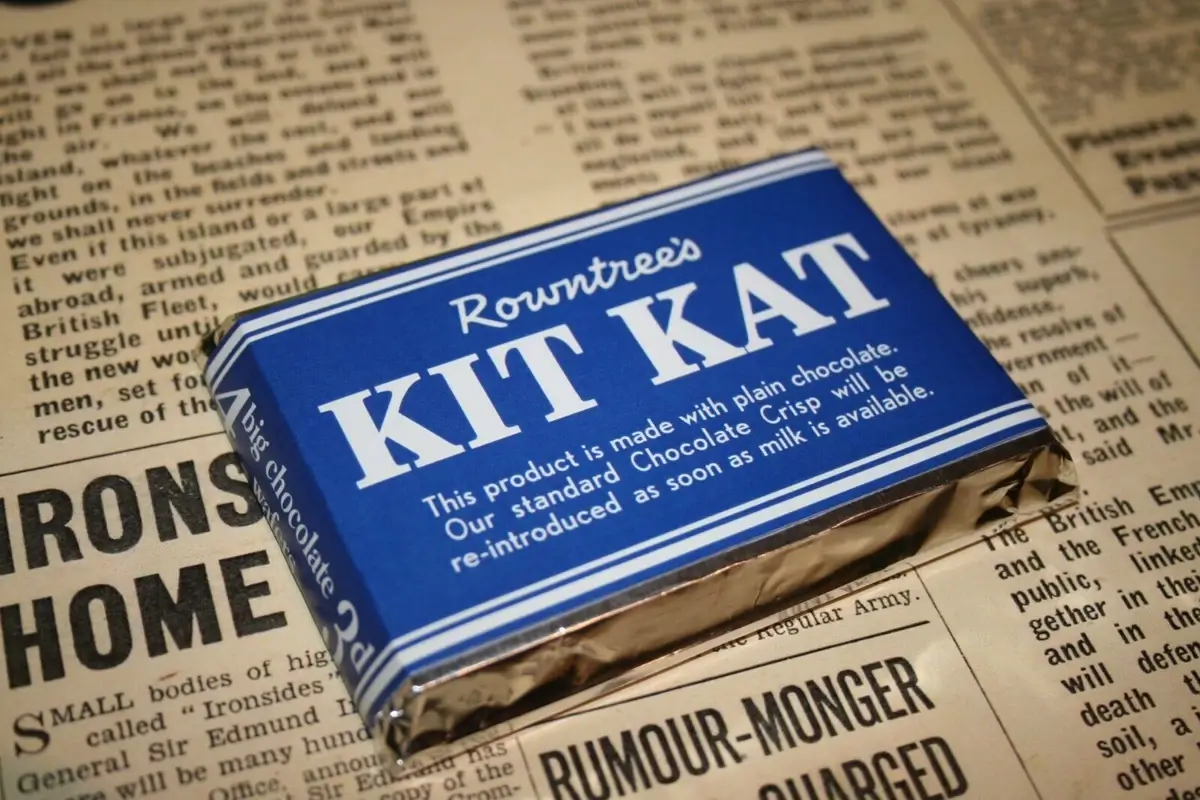
Image: Pinterest
9. Kit Kat’s Unique Slogan History
“Have a break, have a Kit Kat” – this slogan has been synonymous with the brand since its inception in 1957. It encapsulated the idea of taking a pause with a Kit Kat, and has been one of the longest-running slogans in advertising history. The genius of this slogan lies in its simplicity and the universal appeal of taking a break, which resonates with consumers worldwide.
Over the years, the slogan has been adapted into various languages and cultures, each time capturing the essence of a moment of relaxation paired with a delicious treat. It’s a phrase that transcends the product itself, becoming a part of everyday vernacular.
10. The Diverse Flavors of Japanese Kit Kats
Japan has taken Kit Kat to new heights with over 300 unique flavors, some of which are available only in specific regions or for limited times. These range from green tea to sake, and soy sauce to sweet potato. The diversity is a reflection of Japan’s regional produce and culinary traditions, as well as its culture of innovation and gift-giving.
These flavors have not only captivated the Japanese market but have also intrigued chocolate lovers worldwide, becoming a sought-after collectible for travelers. The variety also showcases Nestlé’s dedication to localizing its brand and experimenting with bold new tastes.
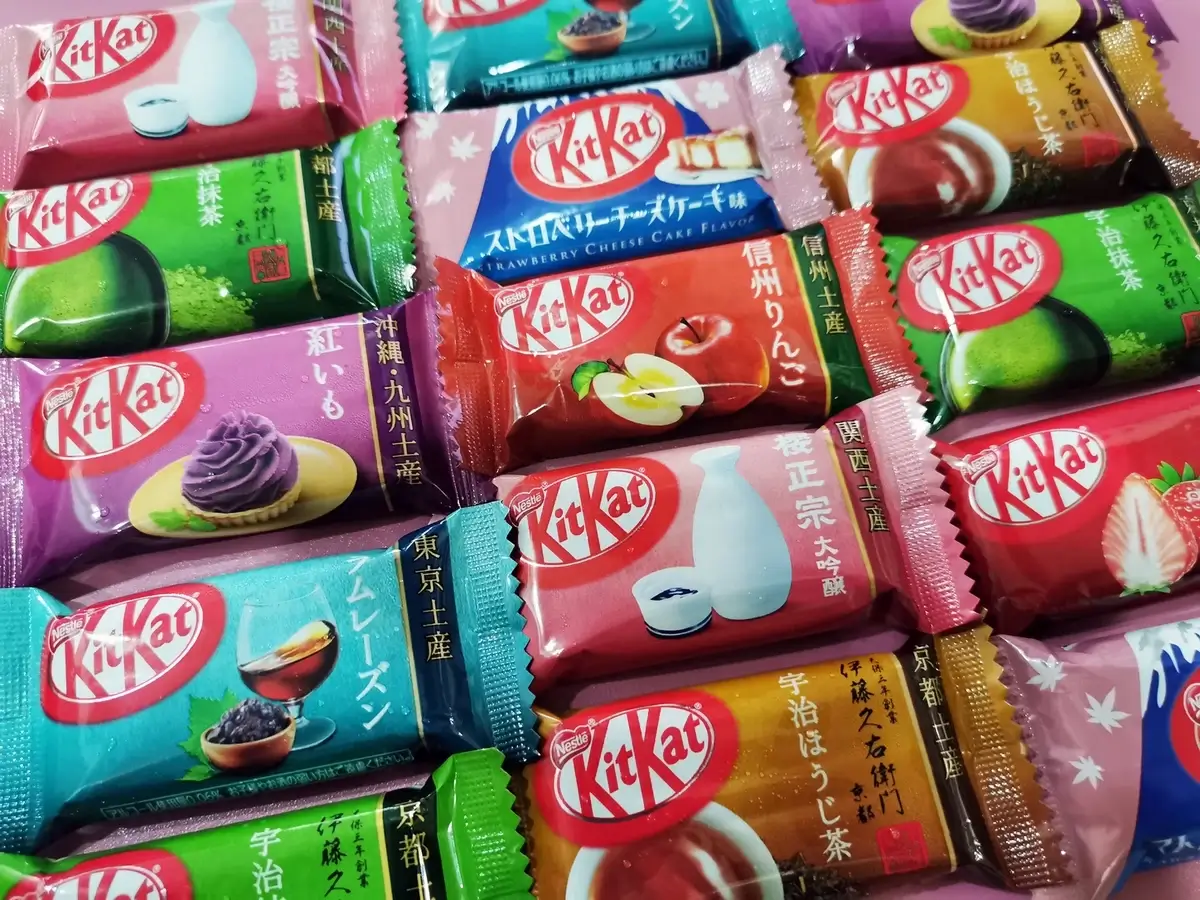
Image: tokyoweekender.com
11. The Innovative Packaging of Kit Kats
Kit Kat’s packaging innovation is as notable as its flavors. In 2019, Nestlé Japan made a revolutionary shift from plastic to paper packaging, which can be folded into origami. This move reflects Kit Kat’s commitment to environmental sustainability and its alignment with the Japanese tradition of origami, adding an interactive experience to the enjoyment of the chocolate.
The brand’s packaging has always been at the forefront of design, often featuring limited edition artwork or interactive elements that appeal to the collector’s spirit and the environmentally conscious consumer. It’s a chocolate bar that comes with a message – enjoy the break, and preserve the planet.

Image: hearstapps.com
12. Unusual Kit Kat Collaborations
Kit Kat is no stranger to unusual collaborations that capture the public’s imagination. From teaming up with Tokyo Banana to create a banana-flavored Kit Kat to partnering with renowned Japanese sake breweries for a sake-infused variety, these collaborations are a testament to Kit Kat’s innovative spirit.
One of the most buzzworthy collaborations was with Sanrio, featuring popular characters like Hello Kitty on the packaging, tapping into the collectibles market. These partnerships have helped Kit Kat stay relevant and exciting, continually offering new experiences to consumers.
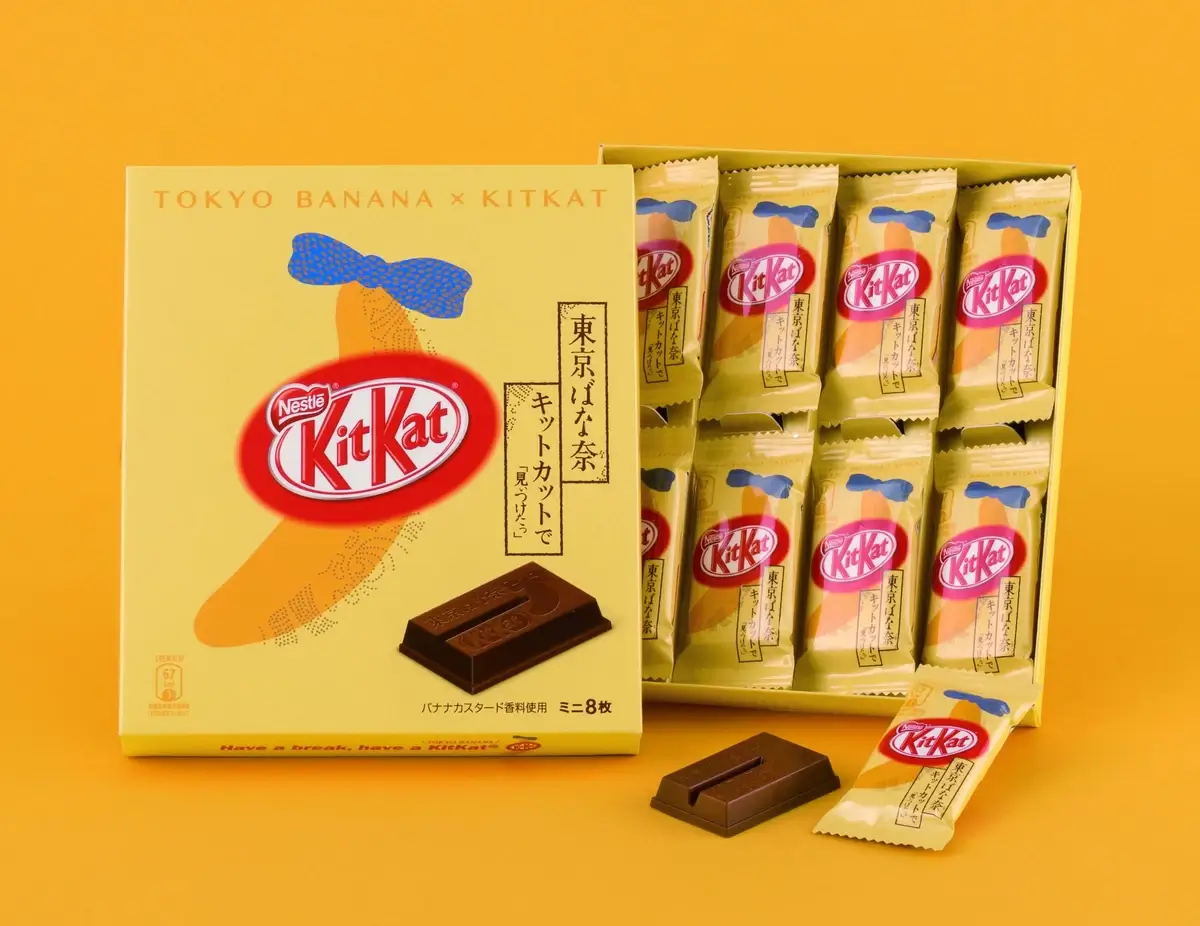
Image: wp.com
13. Kit Kat’s Contribution to Sustainability
Sustainability is at the core of Kit Kat’s business philosophy. Nestlé has pledged to make 100% of its packaging recyclable or reusable by 2025, and Kit Kat is part of this initiative. The brand has taken measures like reducing the plastic in packaging and investing in sustainable farming practices for its cocoa.
The “Cocoa Plan” by Nestlé is another effort, working with farmers to improve the quality of their produce and their quality of life. These moves are not just good for the environment and communities; they resonate with consumers who are increasingly looking for brands that take a stand on social issues.
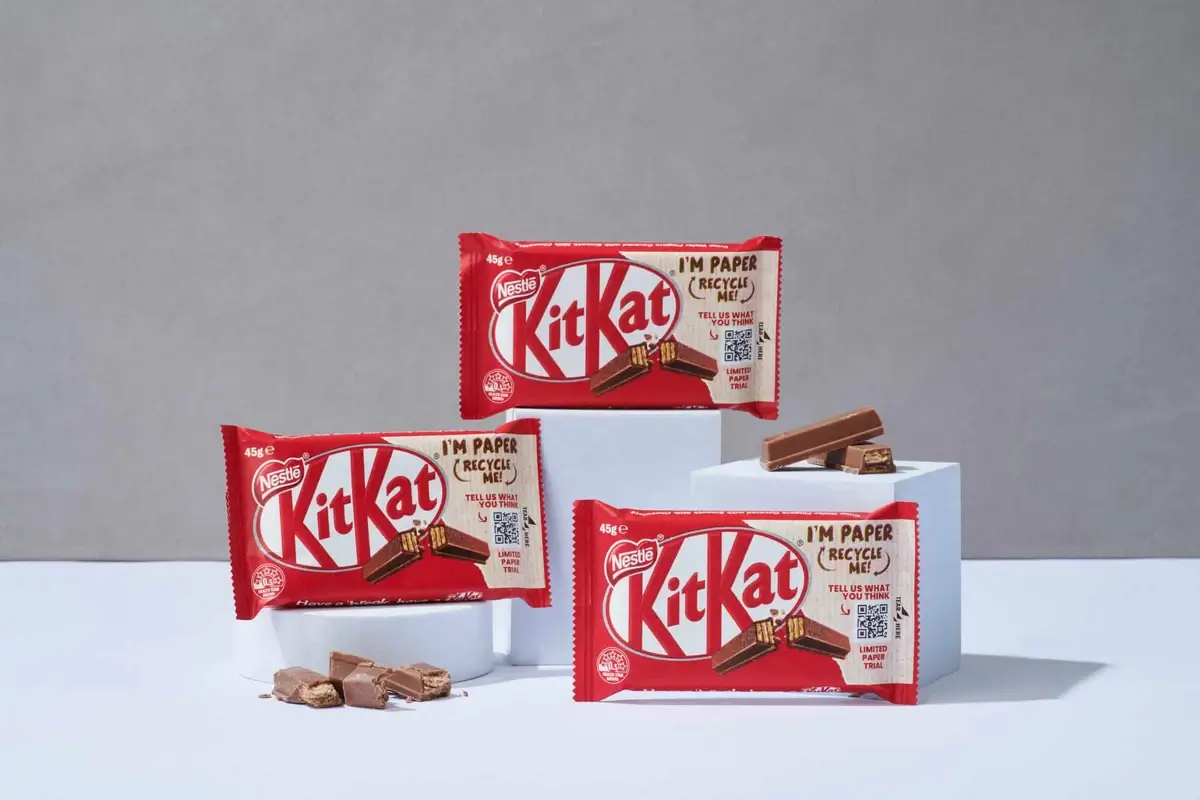
Image: foodmag.com.au
14. The Limited Edition Craze
Limited edition Kit Kats have become a craze, with fans eagerly anticipating the next unique flavor or collaboration. These editions are often released to commemorate events, celebrate holidays, or as part of promotional tie-ins, creating a sense of urgency and exclusivity.
For instance, Kit Kat Gold, released in Australia, was a hit with its caramelized white chocolate flavor. Japan’s regional flavors, like Hokkaido melon or Okinawa sweet potato, also play into this craze, with people traveling to different parts of the country just to get their hands on these exclusive treats.
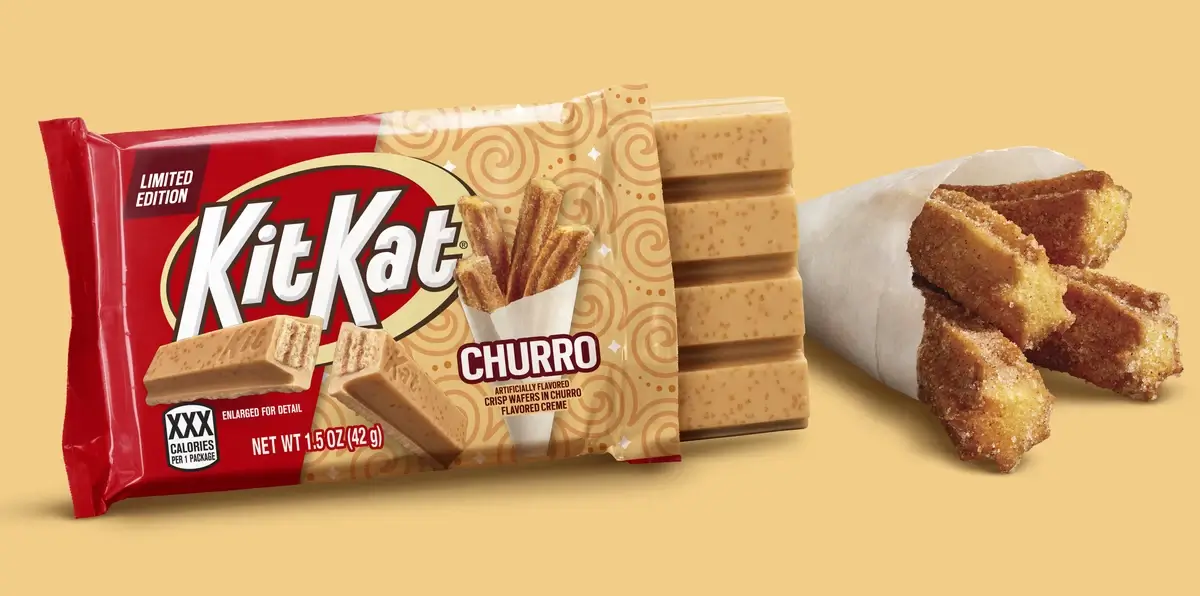
Image: pennlive.com
15. How Kit Kats Became a Break-Time Staple
From its inception, the Kit Kat bar was marketed as the ideal companion for a break, with Rowntree’s first advertising campaigns in the 1930s emphasizing its convenience and portability. However, it was in 1957 that the slogan “Have a break, have a Kit Kat” was coined, cementing its association with break-time. This slogan has endured for over six decades, becoming one of the most recognizable in advertising history.
In 1999, Kit Kat earned the title of the best-selling biscuit in the UK, and by 2004, a study found that a Kit Kat was consumed every second in the UK, demonstrating its engrained status as a break-time staple. The consistent marketing message across generations has been a key driver in maintaining Kit Kat’s break-time association.
16. The Nutritional Evolution of Kit Kats
Kit Kat has adapted to nutritional trends and consumer health awareness over time. In 2009, Nestlé announced a reduction of saturated fat by 30% across its confectionery brands, including Kit Kat. By 2016, they had also reduced the average sugar content by approximately 10%. These changes reflect a shift in consumer demand for healthier options within the confectionery market.
Additionally, the introduction of Kit Kat 70% Dark in 2019 offered a more health-conscious option to consumers, with dark chocolate being recognized for its potential health benefits when consumed in moderation. These nutritional adjustments have allowed Kit Kat to maintain its appeal in a market that is increasingly focused on wellness.

Image: YouTube
17. Kit Kat’s Appearances in Pop Culture
Kit Kat’s pop culture debut can be traced back to its inclusion in the British wartime series “ITMA” in 1939, where it was advertised as a morale booster for the troops. In the 1980s, the iconic jingle “Gimme a break” from a Kit Kat commercial became a catchy tune that American audiences would hum along to. Kit Kat’s appearances in movies such as “Bean” (1997) and “Crazy Stupid Love” (2011) further solidified its place in pop culture.
These appearances often play on Kit Kat’s identity as a shared treat, providing a moment of connection between characters. Its jingle and slogan have become catchphrases, demonstrating the brand’s pervasive influence in entertainment and its ability to evoke nostalgia.
18. The Role of Social Media in Kit Kat Fandom
The rise of social media has transformed how brands like Kit Kat engage with their audience. Nestlé recognized this early on, launching Kit Kat’s Facebook page in 2009, which now boasts millions of followers. Social media has not only been a platform for marketing but also for crowdsourcing new ideas. For instance, the “Choose a Chunky Champion” campaign in 2012 allowed consumers to vote for a new flavor, engaging over 500,000 fans.
In Japan, Twitter has been pivotal for spreading the word about new and seasonal flavors, with Kit Kat Japan’s account reaching a wide audience eager to discuss and share their experiences. This online engagement has been key to Kit Kat’s continued relevance and success in the digital age.
19. Kit Kat’s Seasonal Sensations
Kit Kat’s seasonal releases have become eagerly awaited events for chocolate enthusiasts. Nestlé capitalizes on the festive periods by introducing season-specific flavors. For instance, the Pumpkin Pie flavor for Halloween and the Winter Cranberry for Christmas have become part of the seasonal festivities in many households.
These limited-time flavors are not only a marketing triumph but also a way for consumers to engage in the seasonal spirit through their favorite chocolate brand. The success of these seasonal sensations can be seen in the sales spikes during holiday periods, with Kit Kat experiencing a significant uplift in sales during Halloween and Christmas seasons.
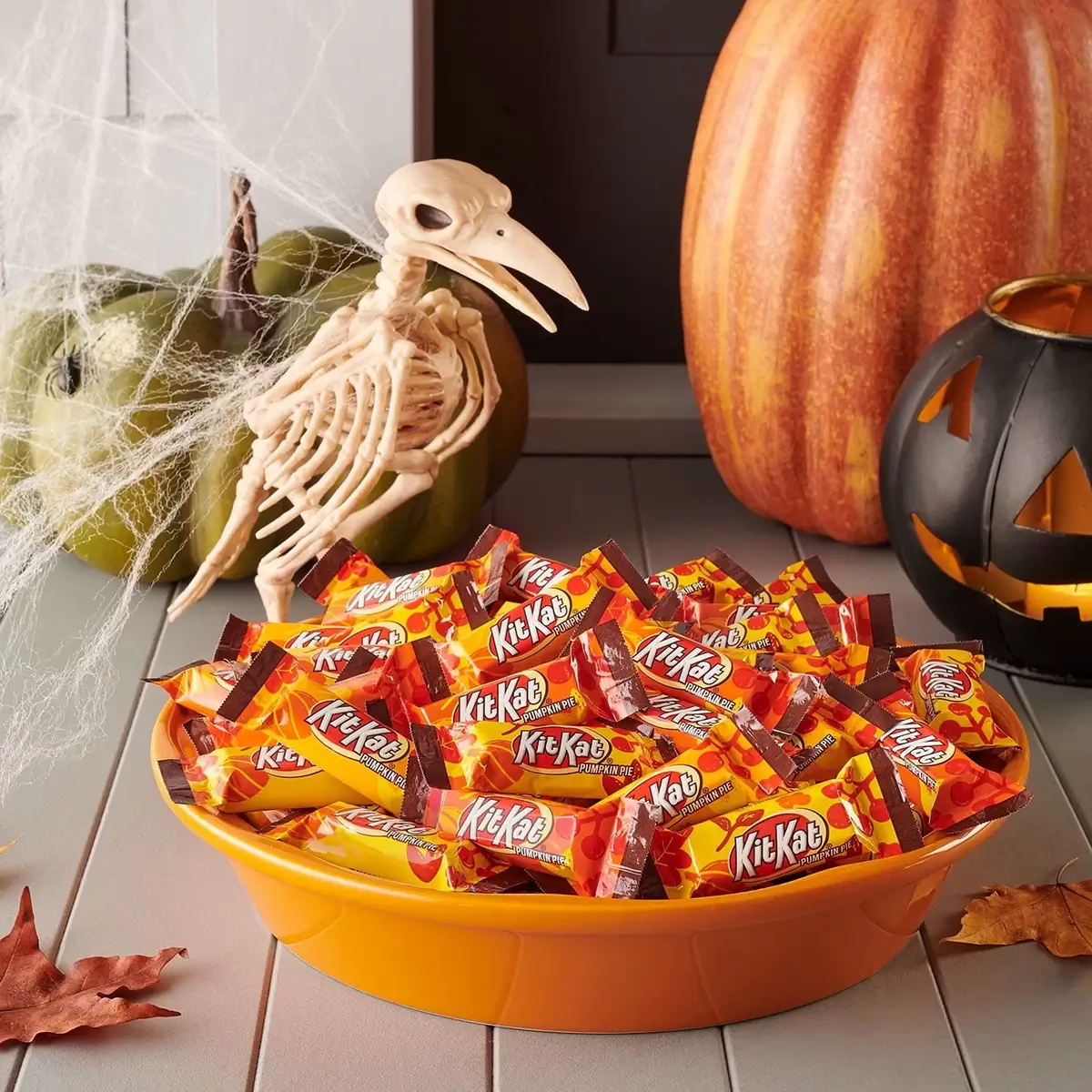
Image: babybargains.com
20. Kit Kat: A Pioneer in Personalization
In recent years, Kit Kat has embraced the trend of personalization, offering consumers the chance to create their own custom Kit Kats at select ‘Chocolatory’ stores around the world. For instance, in 2019, the Kit Kat Chocolatory in Melbourne, Australia, allowed customers to choose from 30,000 different flavor combinations and also personalize the packaging.
This level of personalization has not only provided a unique brand experience but also allowed Kit Kat to stand out in a crowded marketplace. The bespoke approach to chocolate-making has been well-received, with the Chocolatory experiences drawing large crowds and high engagement on social media.
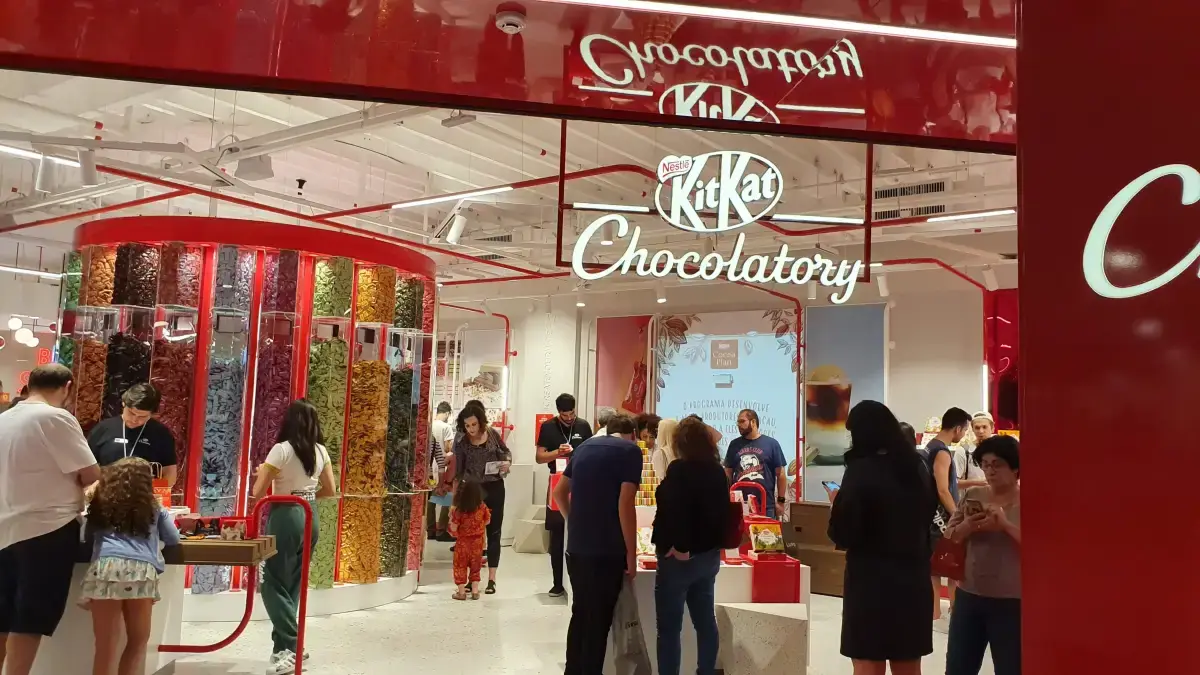
Image: dicasdafabiblog.wordpress.com
FAQ
How did Kit Kat get its name?
Kit Kat derived its name from the Kit-Cat Club, an 18th-century English club where influential artists and politicians met. The club’s name was said to originate from Christopher Catling, who served mutton pies known as ‘kit-cats’ at his pie house. The Rowntree Company adopted the Kit Kat name in 1937, aiming to evoke a sense of sociability and enjoyment, akin to the atmosphere of the Kit-Cat Club.
Why is Kit Kat the best candy?
While “the best” is subjective, Kit Kat’s popularity could be attributed to its perfect balance of chocolate and wafer, which provides a satisfying texture and flavor. The convenience of its breakable fingers makes it easy to share, aligning with its social-centric branding. Additionally, its global presence and adaptability to regional tastes, like the myriad of flavors in Japan, have helped cement its status as a beloved treat.
Who invented Kit Kats?
Kit Kats were invented by Rowntree’s, a confectionery company based in York, England. The product, initially named “Chocolate Crisp,” was created by a Rowntree’s employee, although the exact individual’s name isn’t widely documented. It was later rebranded as Kit Kat after the Kit-Cat Club.
How many Kit Kats are made a day?
Exact daily production numbers can vary greatly by factory and demand. However, as an indication of its popularity, it has been reported that the Nestlé factory in York, UK, produces more than a million Kit Kat bars every day, which contributes to fulfilling global demand for this widespread confection.
Who made the first Kit Kat?
The first Kit Kat was made by Rowntree’s of York, which is now a part of Nestlé. The chocolate bar, initially named “Chocolate Crisp,” was created in the 1930s and was later renamed Kit Kat in 1937.
What is the original Kit Kat made of?
The original Kit Kat is made of three layers of wafer covered in smooth milk chocolate. The classic recipe includes sugar, wheat flour, cocoa butter, non-fat milk powder, chocolate, and vegetable fats, among other ingredients, depending on the region where it is produced.
What is the slogan of Kit Kat?
The slogan of Kit Kat, recognized globally, is “Have a break, have a Kit Kat.” It was first introduced in the UK in 1957 and has become one of the longest-running and most famous advertising slogans, encapsulating the brand’s ethos of taking a break and enjoying a light-hearted moment.
How long do Kit Kats last?
Kit Kats, like most chocolate confections, come with a ‘best before’ date, which is typically about a year from the date of manufacture. However, if stored properly in a cool, dry place, Kit Kats can remain in good condition for consumption a few months past this date, though the quality—such as taste and texture—may start to decline.


